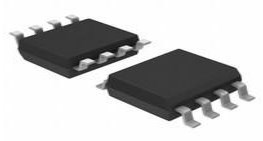NXP MINISASTOCSI Camera Module Guide and Community Solutions
OV5640 MIPI CSI BOARD (MINI SAS)
Solve MINISASTOCSI camera issues with community advice. Get tips on setup, fixing device errors, and optimizing configurations for better performance.
Product Introduction
Setting up the MINISASTOCSI camera module can be tricky. Many users report hardware connection issues, such as improperly connected modules or confusion about compatibility. Others struggle with device detection errors, including mismatched I2C addresses or unresponsive devices. These challenges often feel overwhelming, but community discussions provide practical solutions. By learning from shared experiences, you can avoid common pitfalls and improve your setup process.
The Importance of Community Discussions for MINISASTOCSI Users
How Community Advice Solves Real-World Problems
Community discussions often provide solutions that are practical and easy to implement. Many users share their experiences with the MINISASTOCSI camera, helping others avoid common mistakes. For example, one user discovered that firmly pushing the MINISAS cable into place resolved their issue with the camera interface. This simple tip saved others from spending hours troubleshooting. You can find similar advice on topics like fixing device recognition errors or addressing configuration challenges. By learning from others, you can solve problems faster and with less frustration.
Platforms for MINISASTOCSI Troubleshooting and Support
Several platforms offer spaces for MINISASTOCSI users to connect and share advice. Online forums, such as Raspberry Pi or Arduino communities, often have dedicated threads for camera-related issues. Social media groups and Discord channels also provide real-time support. You can ask questions, share your setup, and get feedback from experienced users. These platforms are invaluable for troubleshooting device errors or learning advanced techniques for your camera module.
Benefits of Collaborative Problem-Solving
Collaborating with others helps you gain new perspectives on solving issues with your MINISASTOCSI camera. When you share your problem, someone might suggest a solution you hadn’t considered. This collective knowledge often leads to quicker resolutions. Additionally, you can contribute your own insights, helping others avoid similar errors. Engaging with the community not only improves your experience but also strengthens the support network for all users.
Troubleshooting Steps for Common MINISASTOCSI Issues
Initial Setup: Key Steps to Avoid Errors
Setting up your MINISASTOCSI camera module correctly from the start can save you from many headaches. Begin by ensuring all hardware connections are secure. The MINISAS cable must be firmly inserted into the port to avoid loose connections. Double-check the alignment of the pins on the connector; even a slight misalignment can lead to errors during operation.
Next, verify the compatibility of your camera with the device you are using. Some users overlook this step, leading to issues later. Consult the documentation provided with the camera module to confirm compatibility. If your setup includes additional peripherals, test each component individually before integrating them. This approach helps you identify potential errors early in the process.
Finally, power up your device and check for any error messages during initialization. If you encounter messages like "failed to allocate required memory," it often indicates insufficient resources on your device. Free up memory by closing unnecessary applications or upgrading your hardware if needed. These proactive measures can prevent setup errors and ensure a smoother experience.
Resolving Device Recognition Problems
Device recognition problems are among the most common issues reported by MINISASTOCSI users. Many of these problems stem from improper cable connections or incorrect configuration settings. If your device fails to detect the camera, start by inspecting the physical connections. Ensure the cable is securely attached and free from damage.
Another frequent cause of recognition errors involves I2C addresses. The camera module relies on these addresses for communication with the device. If the address is mismatched or incorrectly configured, the device may not recognize the camera. Use diagnostic tools to check the I2C address and adjust it as needed.
Users have also reported encountering an "internal data stream error" during device detection. This error often occurs due to outdated drivers or firmware. Update your device's software to the latest version to resolve this issue. If the problem persists, consider resetting the camera module to its default settings. These steps can help you address recognition errors effectively.
Overcoming Configuration Challenges
Configuration challenges can hinder the performance of your MINISASTOCSI camera. Start by reviewing the configuration settings in your device's software. Incorrect settings can lead to errors or suboptimal video output. For example, if the resolution or frame rate is set too high, the camera may struggle to process the data. Adjust these settings to match the capabilities of your device.
Another common issue involves advanced configurations like DTB (Device Tree Blob) and I2C. These settings require precise adjustments to ensure compatibility between the camera module and your device. If you are unfamiliar with these configurations, consult community forums for step-by-step guidance. Many users share detailed instructions that can simplify the process.
Finally, test your setup under different conditions to identify potential weaknesses. For instance, try recording video in various lighting environments to ensure the camera performs consistently. If you encounter persistent errors, such as "failed to allocate required memory," revisit your configuration settings and optimize them further. These troubleshooting steps can help you overcome configuration challenges and enhance your camera's performance.
Community-Driven Solutions and Advanced Configurations
Insights on Connector and Compatibility Issues
Connector and compatibility issues often cause frustration when using the MINISASTOCSI camera. Ensuring proper physical connections is one of the simplest yet most effective ways to resolve these problems. For example, a user once reported that their MINISASTOCSI OV5640 camera was not functioning because the connector was not fully engaged. This highlights the importance of double-checking all connections. You should firmly push the connector into place until it clicks. Even a slight misalignment can prevent the camera from working correctly.
Compatibility issues can also arise if the camera module is not suited to your device. Always verify that your camera matches the specifications of your device. Check the documentation for both the camera and the device to confirm compatibility. If you are unsure, community forums can provide valuable insights. Many users share their experiences with specific camera models and devices, helping you avoid potential pitfalls.
Advanced Techniques: DTB and I2C Configuration
Advanced configurations like DTB (Device Tree Blob) and I2C settings can significantly improve the performance of your MINISASTOCSI camera. However, these adjustments require precision. The DTB file tells your device how to interact with the camera module. If the file is incorrect or outdated, you may encounter errors such as "internal data stream error." To fix this, update the DTB file to the latest version provided by the manufacturer.
I2C configuration is equally important. The camera communicates with the device through I2C addresses. If the address is mismatched, the device may fail to recognize the camera. Use diagnostic tools to identify the correct I2C address. Once you have the address, update your device's configuration file. Many community members share step-by-step guides for these processes, making it easier for you to follow along.
When working with DTB and I2C settings, always back up your current configuration. This precaution allows you to restore the original settings if something goes wrong. Testing your setup after each adjustment ensures that the changes are effective and do not introduce new issues.
Long-Term Optimization Tips from the Community
Optimizing your MINISASTOCSI camera for long-term use involves more than just fixing errors. Regular maintenance and updates can enhance performance and prevent future problems. For instance, cleaning the connectors periodically ensures a stable connection. Dust or debris can interfere with the camera's functionality over time.
Community members often recommend updating your device's firmware and drivers regularly. Outdated software can lead to errors like "failed to allocate required memory." Keeping your system up to date minimizes these risks.
Another tip involves testing the camera under different conditions. Record video in various lighting environments to identify any weaknesses. If you notice performance issues, adjust the camera's settings accordingly. Many users share their optimization techniques in forums, providing you with a wealth of knowledge to draw from.
By following these community-driven tips, you can maximize the performance and lifespan of your MINISASTOCSI camera.
You can improve your MINISASTOCSI experience by applying the troubleshooting tips shared in this blog. Secure connections, update configurations, and test setups to avoid common errors. Community engagement provides valuable support, helping you solve problems faster. Use shared insights to optimize your camera module and enhance its performance over time.
FAQ
How can you check if your MINISASTOCSI camera is compatible with your device?
Refer to the camera module's documentation. Look for supported devices and specifications. Community forums often provide compatibility lists shared by experienced users.
What should you do if your camera module stops working suddenly?
Inspect all physical connections.
Restart your device.
Update firmware and drivers.
Seek advice from community forums if the issue persists.
How do you update the DTB file for your camera module?
Use a terminal or command prompt. Run the following command to update the DTB file:
sudo apt-get update && sudo apt-get upgrade
Specifications
- TypeParameter
- Factory Lead Time8 Weeks
- Part Status
Parts can have many statuses as they progress through the configuration, analysis, review, and approval stages.
Active - Moisture Sensitivity Level (MSL)
Moisture Sensitivity Level (MSL) is a standardized rating that indicates the susceptibility of electronic components, particularly semiconductors, to moisture-induced damage during storage and the soldering process, defining the allowable exposure time to ambient conditions before they require special handling or baking to prevent failures
1 (Unlimited) - Accessory Type
Accessory Type in electronic components refers to additional items or attachments that enhance the functionality or usability of primary components. These can include connectors, adapters, mounting hardware, and protective casings. Accessory Types are essential for ensuring compatibility and achieving optimal performance in electronic systems.
Interface Board - RoHS Status
RoHS means “Restriction of Certain Hazardous Substances” in the “Hazardous Substances Directive” in electrical and electronic equipment.
ROHS3 Compliant
Datasheet PDF
- Environmental Information :
 An Overview of STM32L082xx Ultra-Low-Power 32-bit MCU
An Overview of STM32L082xx Ultra-Low-Power 32-bit MCU29 February 2024187
 M95020-W EEPROM: Pinout, Features and Datasheet
M95020-W EEPROM: Pinout, Features and Datasheet07 January 20221779
![MMBT2222ALT1G General Purpose Transistor: Pinout, Equivalent and Datasheet [FAQ]](https://res.utmel.com/Images/Article/3bb57788-eb67-4daf-a907-8b75eec4b6d4.png) MMBT2222ALT1G General Purpose Transistor: Pinout, Equivalent and Datasheet [FAQ]
MMBT2222ALT1G General Purpose Transistor: Pinout, Equivalent and Datasheet [FAQ]06 May 20221865
 STM32F302R6T6 Microcontroller: 72MHz, 64 KB Flash and 64-Pin LQFP
STM32F302R6T6 Microcontroller: 72MHz, 64 KB Flash and 64-Pin LQFP13 January 2022299
![The Overview of MS5637 Pressure Sensor [Video]](https://res.utmel.com/Images/Article/03e2393d-b9f4-4c6b-ba73-6857e5ea7a29.jpg) The Overview of MS5637 Pressure Sensor [Video]
The Overview of MS5637 Pressure Sensor [Video]08 July 2021849
 Delving into the Technical Specifications of the Microchip PIC16C74B20PQ Microcontroller
Delving into the Technical Specifications of the Microchip PIC16C74B20PQ Microcontroller29 February 202488
 BLM21PG221SN1D 220 Ohms @ 100 MHz Tape & Reel: Datasheet, Application, and Equivalents
BLM21PG221SN1D 220 Ohms @ 100 MHz Tape & Reel: Datasheet, Application, and Equivalents12 February 2022587
 CR2016 Battery: Pinout, Equivalents, CR2016 vs. CR2032
CR2016 Battery: Pinout, Equivalents, CR2016 vs. CR203206 October 20212558
 Msemitek Authorized Distributor | UTMEL Electronics
Msemitek Authorized Distributor | UTMEL Electronics21 November 20232152
 Introduction to Wireless Router
Introduction to Wireless Router17 June 20212131
 What is a Decoder?
What is a Decoder?29 November 202116909
 What is a variable capacitor?
What is a variable capacitor?16 April 202558663
 Introduction To Different Types Of Relays
Introduction To Different Types Of Relays10 November 202010770
 What is Field Programmable Gate Array(FPGA)?
What is Field Programmable Gate Array(FPGA)?27 April 20221076
 Types and Application of Position Sensors
Types and Application of Position Sensors31 October 20256013
 What is Resistor?
What is Resistor?02 November 20215094
NXP USA Inc.
In Stock: 49
United States
China
Canada
Japan
Russia
Germany
United Kingdom
Singapore
Italy
Hong Kong(China)
Taiwan(China)
France
Korea
Mexico
Netherlands
Malaysia
Austria
Spain
Switzerland
Poland
Thailand
Vietnam
India
United Arab Emirates
Afghanistan
Åland Islands
Albania
Algeria
American Samoa
Andorra
Angola
Anguilla
Antigua & Barbuda
Argentina
Armenia
Aruba
Australia
Azerbaijan
Bahamas
Bahrain
Bangladesh
Barbados
Belarus
Belgium
Belize
Benin
Bermuda
Bhutan
Bolivia
Bonaire, Sint Eustatius and Saba
Bosnia & Herzegovina
Botswana
Brazil
British Indian Ocean Territory
British Virgin Islands
Brunei
Bulgaria
Burkina Faso
Burundi
Cabo Verde
Cambodia
Cameroon
Cayman Islands
Central African Republic
Chad
Chile
Christmas Island
Cocos (Keeling) Islands
Colombia
Comoros
Congo
Congo (DRC)
Cook Islands
Costa Rica
Côte d’Ivoire
Croatia
Cuba
Curaçao
Cyprus
Czechia
Denmark
Djibouti
Dominica
Dominican Republic
Ecuador
Egypt
El Salvador
Equatorial Guinea
Eritrea
Estonia
Eswatini
Ethiopia
Falkland Islands
Faroe Islands
Fiji
Finland
French Guiana
French Polynesia
Gabon
Gambia
Georgia
Ghana
Gibraltar
Greece
Greenland
Grenada
Guadeloupe
Guam
Guatemala
Guernsey
Guinea
Guinea-Bissau
Guyana
Haiti
Honduras
Hungary
Iceland
Indonesia
Iran
Iraq
Ireland
Isle of Man
Israel
Jamaica
Jersey
Jordan
Kazakhstan
Kenya
Kiribati
Kosovo
Kuwait
Kyrgyzstan
Laos
Latvia
Lebanon
Lesotho
Liberia
Libya
Liechtenstein
Lithuania
Luxembourg
Macao(China)
Madagascar
Malawi
Maldives
Mali
Malta
Marshall Islands
Martinique
Mauritania
Mauritius
Mayotte
Micronesia
Moldova
Monaco
Mongolia
Montenegro
Montserrat
Morocco
Mozambique
Myanmar
Namibia
Nauru
Nepal
New Caledonia
New Zealand
Nicaragua
Niger
Nigeria
Niue
Norfolk Island
North Korea
North Macedonia
Northern Mariana Islands
Norway
Oman
Pakistan
Palau
Palestinian Authority
Panama
Papua New Guinea
Paraguay
Peru
Philippines
Pitcairn Islands
Portugal
Puerto Rico
Qatar
Réunion
Romania
Rwanda
Samoa
San Marino
São Tomé & Príncipe
Saudi Arabia
Senegal
Serbia
Seychelles
Sierra Leone
Sint Maarten
Slovakia
Slovenia
Solomon Islands
Somalia
South Africa
South Sudan
Sri Lanka
St Helena, Ascension, Tristan da Cunha
St. Barthélemy
St. Kitts & Nevis
St. Lucia
St. Martin
St. Pierre & Miquelon
St. Vincent & Grenadines
Sudan
Suriname
Svalbard & Jan Mayen
Sweden
Syria
Tajikistan
Tanzania
Timor-Leste
Togo
Tokelau
Tonga
Trinidad & Tobago
Tunisia
Turkey
Turkmenistan
Turks & Caicos Islands
Tuvalu
U.S. Outlying Islands
U.S. Virgin Islands
Uganda
Ukraine
Uruguay
Uzbekistan
Vanuatu
Vatican City
Venezuela
Wallis & Futuna
Yemen
Zambia
Zimbabwe




















